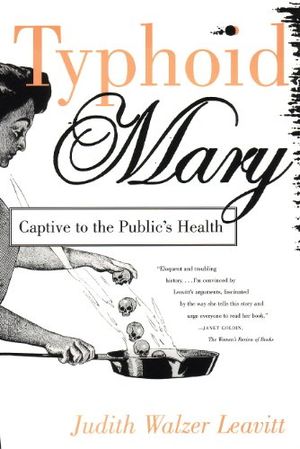The Frightening Legacy of Typhoid Mary
With concerns about infectious disease in the news, a look back at history’s most famous carrier
/https://tf-cmsv2-smithsonianmag-media.s3.amazonaws.com/filer/3e/4f/3e4f5232-70d5-4514-866a-71a0179abf9d/mar2015_h03_phenom-typhoidmary.jpg)
One March day in 1907, a man appeared at the Park Avenue brownstone where 37-year-old Mary Mallon worked as a cook. He demanded a little bit of her blood, urine and feces. “It did not take Mary long to react to this suggestion,” the man later wrote of the encounter. “She seized a carving fork and advanced in my direction.”
The man with the strange request was George Soper, a sanitary engineer investigating a typhoid outbreak at a house in Oyster Bay, Long Island, where Mallon had worked. Soper believed that Mallon was a healthy carrier of the disease, a relatively new idea at the time. Later, he returned, and after evading authorities for five hours Mallon was betrayed by a scrap of her dress, caught in the door of her hiding place.
When she tested positive for typhoid bacteria, the Department of Health forcibly moved her to North Brother Island, a dot of land in the East River just off the Bronx that housed a quarantine facility. She was released in 1910, after swearing she wouldn’t cook professionally again. Five years later, she was found working in the kitchen at a hospital where a typhoid outbreak was underway. This month marks 100 years since Typhoid Mary was apprehended for the second and final time, living the next 23 years—the rest of her life—under quarantine.
Mallon’s legend grew almost immediately. A newspaper illustration during her first imprisonment conveyed the public’s morbid fascination with her: An aproned woman casually drops miniature human skulls into a skillet, like eggs. Today, the name “Typhoid Mary” stands for anyone who callously spreads disease or evil. There’s even a Marvel comic book villain named after her: a female assassin with a vicious temper.
But the real story is more complicated than the caricature. Historians such as Judith Walzer Leavitt, author of Typhoid Mary: Captive to the Public’s Health, point out that by the time of her second imprisonment Mallon was far from the only known carrier. There were thousands across the country and hundreds in New York, and today we know that being a carrier of disease is not that unusual: Up to 6 percent of people who’ve had typhoid, which is still common in the developing world, can spread it long after they’ve recovered, even if they exhibited few or no symptoms, says Denise Monack, a microbiologist at Stanford. Monack has shown that genetic mutations might allow bacteria to climb unnoticed into immune cells, where they take up long-term residence.
So why was Mallon alone among carriers imprisoned for life? “That’s the million-dollar question that nobody can answer,” says James Colgrove, a professor of sociomedical sciences at Columbia. It might have been because she was female, Irish, uncooperative and without a family. Today Mallon’s case is archetypal in bioethics literature, as scholars debate when the government is justified in depriving someone of her freedom for a perceived greater good—an issue with renewed public resonance when health workers returning from Ebola-ravaged West Africa are quarantined against their will. But Mallon’s case also endures as a symbol of a transitional moment, before antibiotics, when microbes were first revealing themselves to science. Neither Mallon nor the public quite understood what she was being accused of, which must have felt like something akin to thought crime.
Mallon died in 1938, after more than two decades on North Brother Island. She never lost the sense of persecution she evinced in a 1909 letter to a lawyer, feeling herself a “peep show for every body.” The medical staff and residents, she wrote, would see her and say, “There she is, the kidnapped woman.”
Related Reads

Typhoid Mary

Typhoid Mary: Captive to the Public's Health